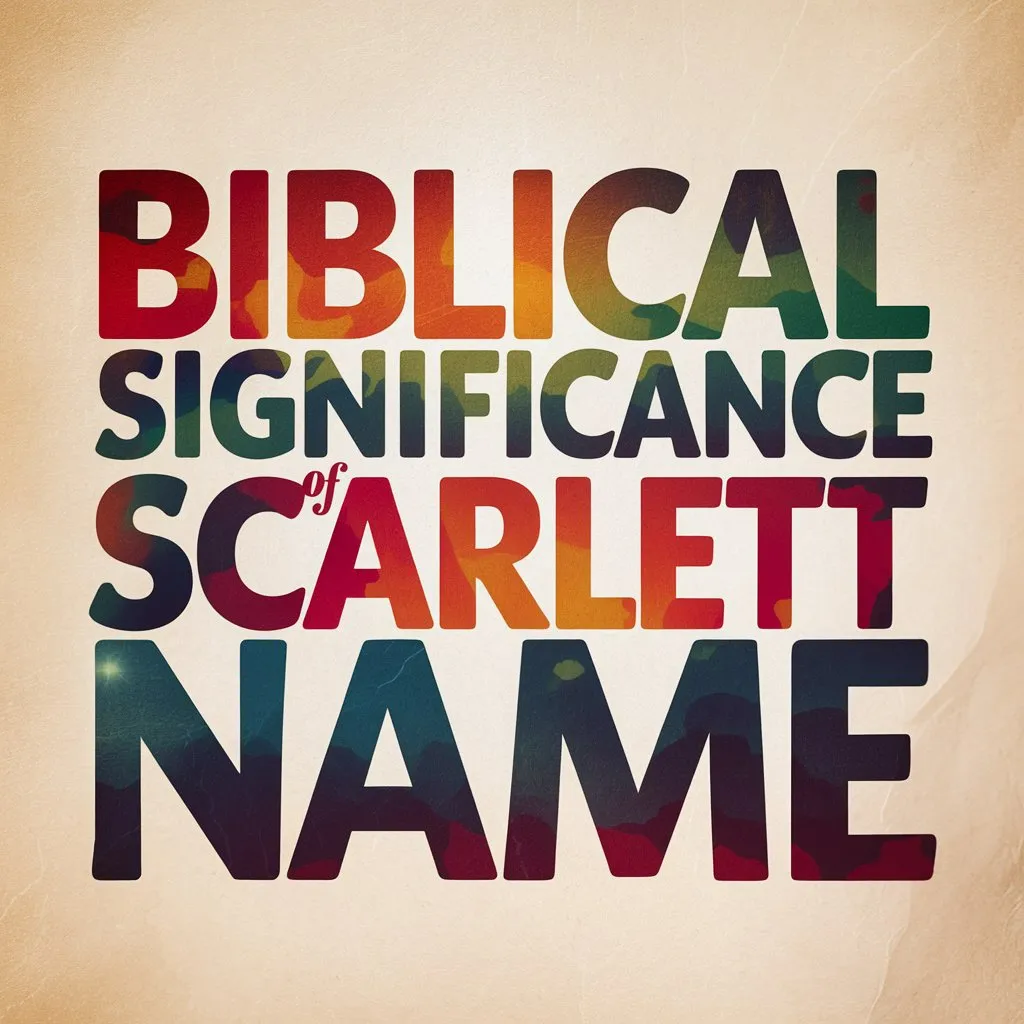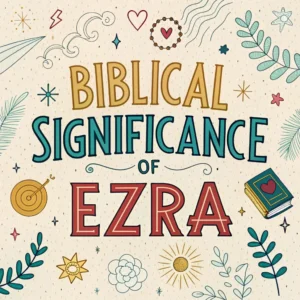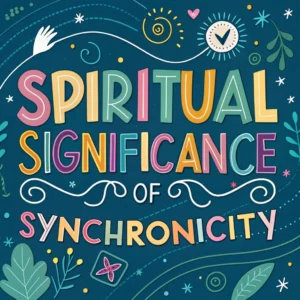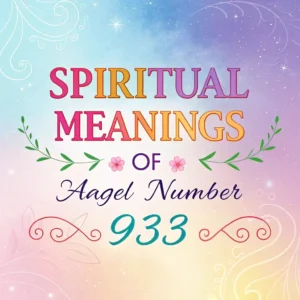Scarlett is a name that carries deep symbolism and rich meaning, particularly when viewed through a biblical lens.
While not directly mentioned as a name in the Bible, the word “scarlet” appears numerous times throughout scripture, offering profound insights into its spiritual significance.
In this comprehensive exploration, we’ll delve into the biblical meaning of Scarlett, uncovering its connections to sin, redemption, and the ultimate sacrifice of Jesus Christ.
The Biblical Significance of Scarlett
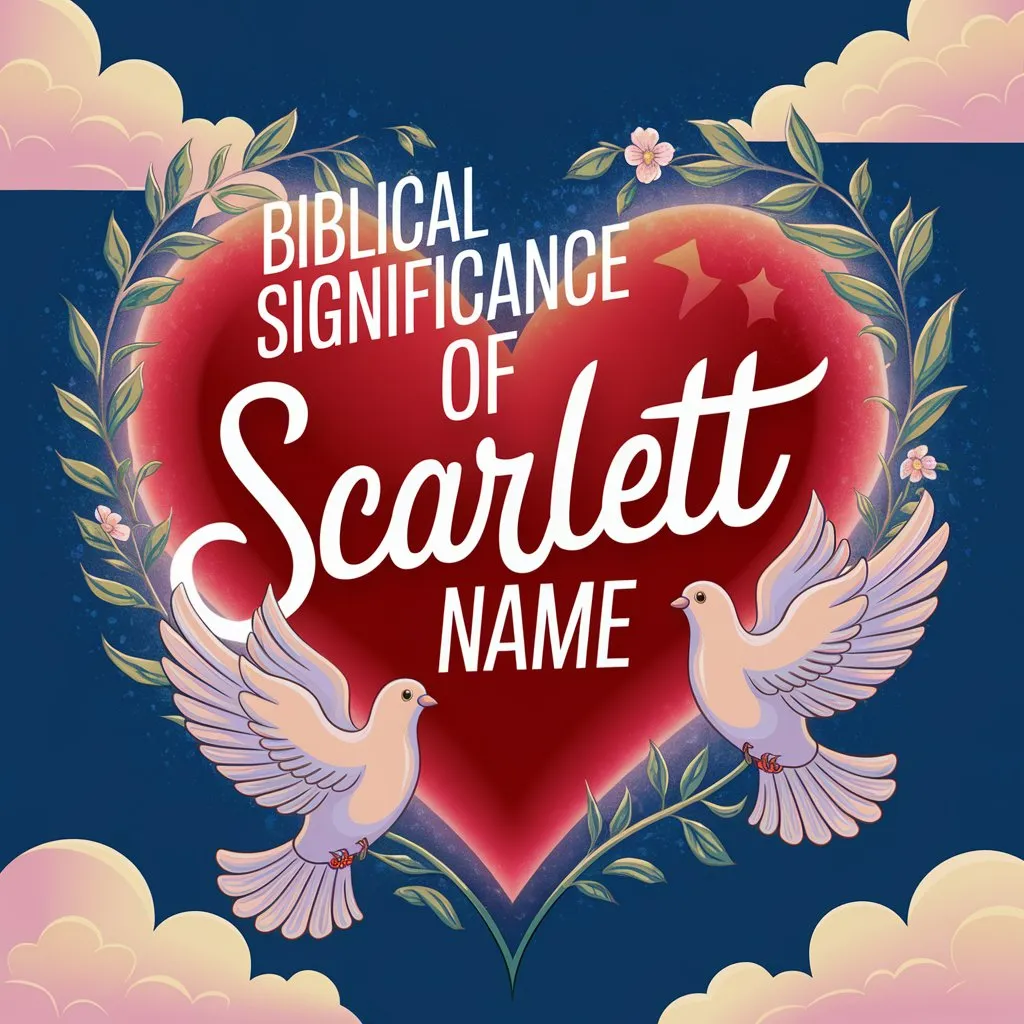
- Symbolic Color: In the Bible, scarlet represents sin, sacrifice, and redemption.
- Old Testament References: Scarlet is mentioned in Exodus and Leviticus in relation to purification rituals.
- Prophetic Imagery: The prophet Isaiah uses scarlet to illustrate the transformative power of God’s forgiveness.
- New Testament Significance: Scarlet appears in the Gospels during Jesus’ crucifixion, symbolizing His sacrificial love.
- Spiritual Transformation: The color scarlet in scripture often signifies the journey from sin to redemption.
- Blood Symbolism: Scarlet is closely associated with blood, representing both sin and cleansing.
- Royal Connotations: In biblical times, scarlet was a color of royalty and wealth.
- Rahab’s Story: The scarlet cord in Joshua symbolizes faith and deliverance.
- Tabernacle Significance: Scarlet was used in the construction of the Tabernacle, representing worship and sacrifice.
- End Times Imagery: In Revelation, scarlet is associated with worldly power and corruption.
The Etymology of Scarlett
The name Scarlett originates from the Old French word “escarlate,” which referred to a rich, bright red fabric. This word, in turn, has its roots in the Latin “scarlatum” and the Persian “saqalāt,” both referring to a type of fine cloth.
While the name itself is not of direct biblical origin, its connection to the color scarlet provides a gateway to understanding its spiritual significance.
The rich history of the name Scarlett reflects the enduring fascination with this vibrant hue throughout human civilization.
From ancient Persian textiles to medieval European courts, scarlet has long been associated with luxury, power, and passion.
This cultural significance adds depth to the biblical symbolism, creating a name that resonates across both secular and spiritual realms.
Scarlet in the Old Testament
In the Old Testament, scarlet plays a significant role in various contexts, often symbolizing sin, sacrifice, and purification.
The book of Exodus mentions scarlet in the construction of the Tabernacle, where it was used alongside blue and purple in the creation of sacred items.
Leviticus also references scarlet in purification rituals, particularly in the cleansing of leprosy. The use of scarlet wool in these ceremonies symbolized the removal of sin and the restoration of purity.
The prevalence of scarlet in Old Testament rituals underscores its spiritual importance in ancient Israelite worship.
The color’s association with blood and sacrifice foreshadowed the ultimate atonement that would come through Christ.
In the Tabernacle and later the Temple, scarlet served as a constant visual reminder of the cost of sin and the necessity of purification before a holy God.
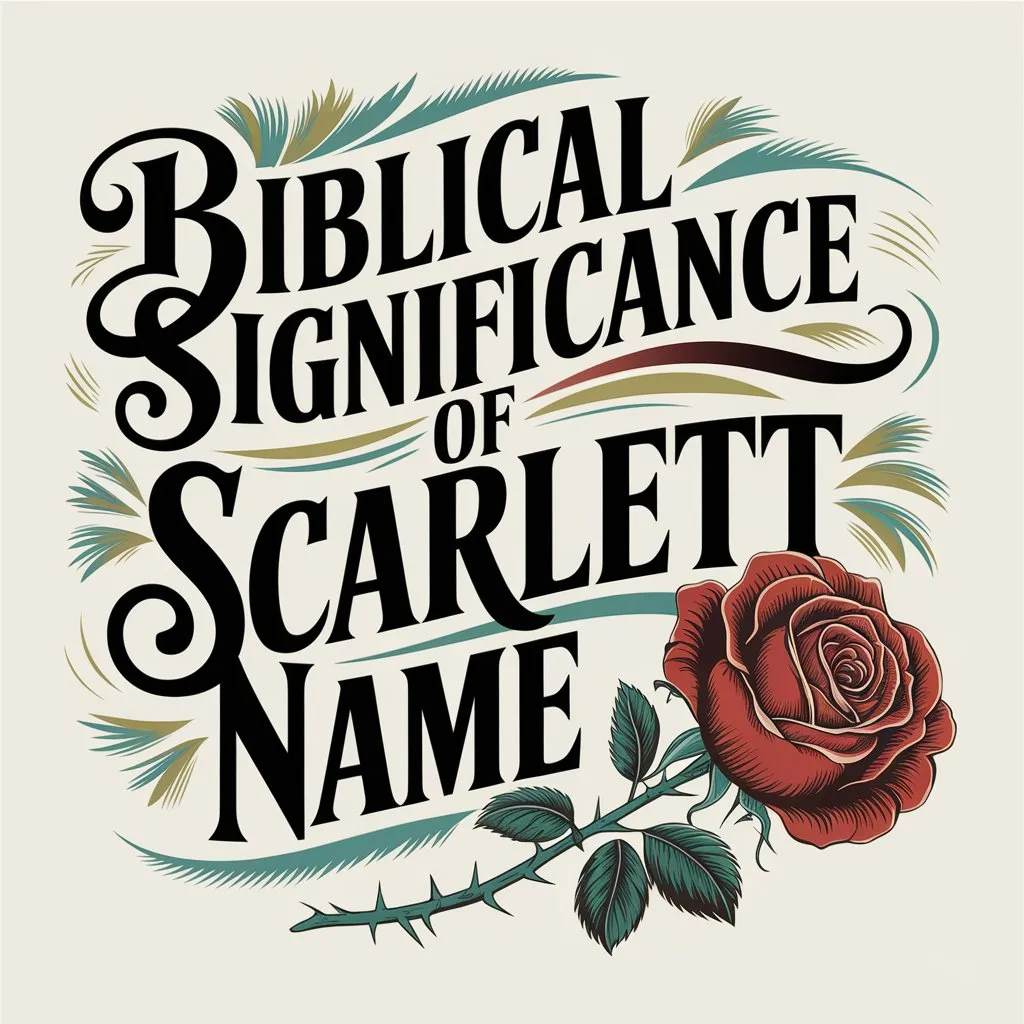
The Prophetic Imagery of Scarlet
One of the most powerful biblical references to scarlet comes from the prophet Isaiah. In Isaiah 1:18, we read:
“Come now, let us settle the matter,” says the Lord. “Though your sins are like scarlet, they shall be as white as snow; though they are red as crimson, they shall be like wool.”
This verse beautifully illustrates the transformative power of God’s forgiveness, using the stark contrast between scarlet (representing sin) and white (representing purity) to convey the magnitude of divine grace.
The prophetic use of scarlet imagery extends beyond Isaiah, appearing in other prophetic books as well.
These references often juxtapose the vivid red of scarlet with purity and righteousness, emphasizing the dramatic transformation that occurs through divine intervention.
This recurring theme reinforces the idea of scarlet as a powerful symbol of both human fallenness and God’s redemptive work.
Scarlet in the New Testament
In the New Testament, scarlet takes on new significance, particularly in the Passion narrative.
During Jesus’ crucifixion, the Roman soldiers mockingly dressed Him in a scarlet robe, unwittingly fulfilling prophecy and emphasizing His role as the sacrificial Lamb of God.
The appearance of scarlet in the New Testament narratives adds layers of meaning to its already rich symbolism. Beyond the crucifixion account, scarlet imagery is woven throughout the apostolic teachings, often alluding to the redemptive work of Christ.
This continuity between Old and New Testament symbolism highlights the unified message of salvation throughout scripture, with scarlet serving as a vivid thread connecting ancient prophecies to their fulfillment in Jesus.
The Symbolism of Blood and Sacrifice
Throughout the Bible, scarlet is closely associated with blood, which carries profound theological implications.
Blood represents both the stain of sin and the means of cleansing. The sacrificial system of the Old Testament, with its emphasis on blood atonement, foreshadowed the ultimate sacrifice of Jesus Christ on the cross.
The intricate connection between scarlet and blood in biblical symbolism offers a powerful metaphor for the Christian journey.
It reminds believers of the dual nature of blood as both a symbol of mortality and a source of life.
This paradox is central to the Christian understanding of redemption, where the blood of Christ both exposes sin and provides cleansing, a concept that the color scarlet vividly represents.
Scarlet and Royalty
In biblical times, scarlet was a color of royalty and wealth. Its use in the Tabernacle and later in the Temple underscored the majesty of God and the reverence due to Him in worship.
This royal connotation adds another layer of meaning to the scarlet robe placed on Jesus, ironically proclaiming His true identity as the King of Kings.
The association of scarlet with royalty extends beyond biblical contexts, influencing cultural perceptions throughout history.
In many ancient societies, the difficulty and expense of producing scarlet dye made it a symbol of prestige and power.
This secular significance intertwines with the biblical symbolism, creating a rich tapestry of meaning that encompasses both earthly authority and divine sovereignty.
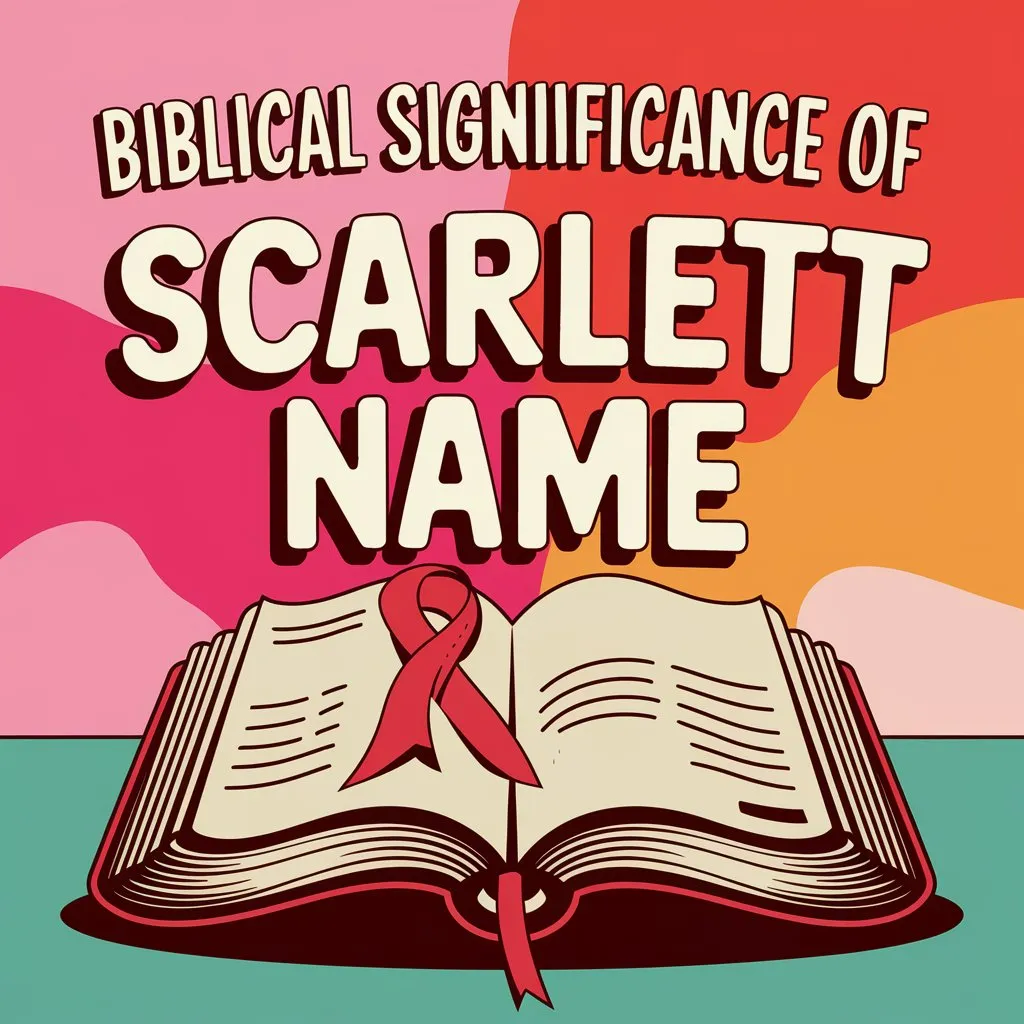
The Scarlet Cord of Rahab
The story of Rahab in the book of Joshua provides another powerful example of scarlet’s symbolic significance.
Rahab, a Canaanite woman who aided the Israelite spies, was instructed to hang a scarlet cord from her window as a sign of her faith and a guarantee of her family’s safety.
This scarlet cord foreshadowed the saving blood of Christ and demonstrated the power of faith in God’s promises.
Rahab’s scarlet cord serves as a tangible symbol of faith and deliverance in the Old Testament narrative.
This vivid image not only highlights the transformative power of faith but also foreshadows the broader theme of redemption through blood that culminates in the New Testament.
The story of Rahab offers a powerful example of how God’s salvation extends beyond the boundaries of race and social status, a theme that resonates throughout biblical history.
Scarlet in the Tabernacle and Temple
The use of scarlet in the construction of the Tabernacle and later the Temple was not arbitrary. Along with blue and purple, scarlet represented the holiness and glory of God.
Its presence in these sacred spaces reminded the Israelites of their need for atonement and the costliness of worship.
The deliberate inclusion of scarlet in the design of Israel’s most sacred spaces underscores its spiritual significance.
Every time the priests entered the Tabernacle or Temple, the vibrant hue of scarlet served as a visual reminder of the blood sacrifices required for atonement.
This constant presence of scarlet in worship settings created a tangible link between the people’s daily religious practices and the deeper spiritual truths of sin, sacrifice, and redemption.
Scarlet in End Times Prophecy
In the book of Revelation, scarlet appears in a different context, often associated with the corrupt world system that opposes God.
The woman riding the beast in Revelation 17 is clothed in purple and scarlet, symbolizing worldly power and luxury that stand in opposition to God’s kingdom.
The shift in scarlet’s symbolism within apocalyptic literature adds a complex dimension to its biblical meaning.
While still retaining connotations of royalty and sacrifice, scarlet in Revelation also becomes associated with corruption and worldly excess.
This multifaceted use of scarlet imagery in the Bible’s final book serves as a powerful reminder of the ongoing spiritual battle between godly and worldly values, challenging believers to discern and resist the allure of earthly power and luxury.
The Spiritual Significance for Believers
For those who bear the name Scarlett or are drawn to its meaning, the biblical symbolism offers profound spiritual insights:
- Reminder of Redemption: The name can serve as a constant reminder of God’s redeeming love and the transformative power of His grace.
- Call to Holiness: Just as scarlet was used in the Tabernacle, it can inspire a commitment to holy living and reverent worship.
- Symbol of Sacrifice: Scarlett can remind believers of the ultimate sacrifice of Jesus Christ and the call to sacrificial living.
- Emblem of Faith: Like Rahab’s scarlet cord, the name can symbolize unwavering faith in God’s promises.
- Warning Against Worldliness: The name can also serve as a caution against the allure of worldly power and materialism.
The rich biblical symbolism of scarlet offers believers a powerful tool for spiritual reflection and growth.
By meditating on these various aspects of scarlet’s meaning, individuals can deepen their understanding of key theological concepts and apply them to their daily lives.
The name Scarlett, therefore, becomes not just a personal identifier but a constant reminder of God’s work in human history and in individual lives.
Conclusion
While Scarlett may not be a name found directly in the Bible, its rich symbolism and deep spiritual significance make it a powerful choice for those seeking a name with biblical resonance.
From its associations with sin and redemption to its connections with royalty and sacrifice, Scarlett encapsulates many of the core themes of the Christian faith.
For parents considering this name or individuals named Scarlett, embracing its biblical symbolism can provide a lifelong source of spiritual reflection and inspiration.
It serves as a beautiful reminder of the journey from sin to salvation, the costliness of grace, and the transformative power of God’s love.
In a world that often seeks to diminish the significance of names, choosing Scarlett with an understanding of its biblical meaning can be a profound act of faith and a testament to the enduring power of scriptural symbolism in our lives.
FAQs
Is Scarlett a biblical name?
While Scarlett is not directly mentioned as a name in the Bible, the word “scarlet” appears numerous times throughout scripture, carrying significant symbolic meaning.
What does scarlet represent in the Bible?
In the Bible, scarlet often represents sin, sacrifice, and redemption. It is also associated with blood, royalty, and purification rituals.
How is scarlet used in Old Testament rituals?
Scarlet was used in various purification rituals described in Leviticus and was also a key color in the construction of the Tabernacle and Temple.
What is the significance of the scarlet robe in Jesus’ crucifixion?
The scarlet robe placed on Jesus by the Roman soldiers symbolized His royal status as the King of Kings and foreshadowed His sacrificial death.
How does Isaiah use the imagery of scarlet?
In Isaiah 1:18, the prophet uses scarlet to illustrate the stark contrast between sin and God’s forgiveness, emphasizing the transformative power of divine grace.
What is the meaning of Rahab’s scarlet cord?
Rahab’s scarlet cord, mentioned in the book of Joshua, symbolizes faith, deliverance, and foreshadows the saving power of Christ’s blood.
How is scarlet used in the book of Revelation?
In Revelation, scarlet is often associated with worldly power, luxury, and the corrupt system that opposes God’s kingdom.
Can the name Scarlett have a positive spiritual meaning?
Yes, Scarlett can be seen as a powerful reminder of God’s redeeming love, the transformative power of grace, and the call to holy living.
How might someone named Scarlett apply its biblical symbolism to their life?
Someone named Scarlett could use the name’s biblical associations as inspiration for living a life dedicated to faith, sacrifice, and spiritual transformation.
Does the biblical meaning of scarlet change between the Old and New Testaments?
While the core symbolism remains consistent, the New Testament, particularly in the crucifixion narrative, adds deeper layers of meaning related to Christ’s sacrifice and redemption.

Hello, I’m Zephyra, your guide at SpiritualityEssence.com. I’m passionate about uncovering life’s mysteries and sharing transformative insights. Let’s explore mindfulness, ancient rituals, and the path to a more awakened life together. Join me on this spiritual journey!

